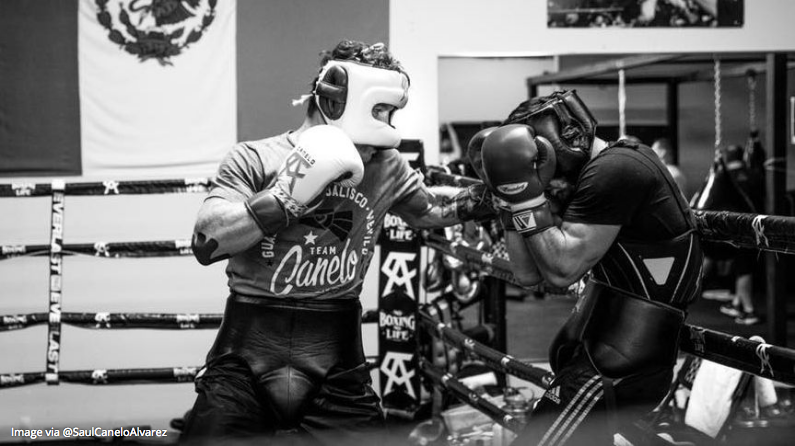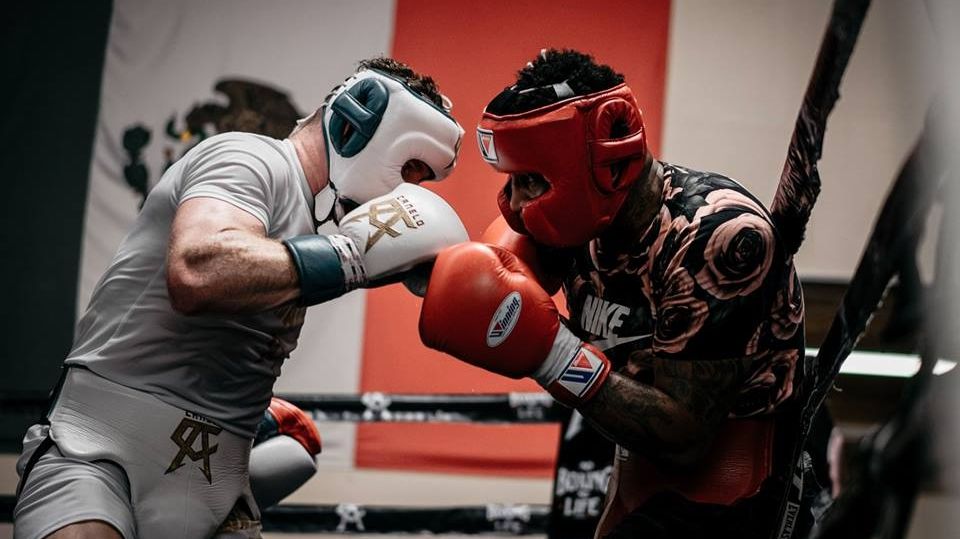Being an effective boxer isn’t all about how hard you can hit, nor is it about possessing a chin made of granite. Sure, having either of those attributes will help, but realistically, a good defense is of equal if not greater importance.
There are a number of factors required to make up a good defense, but ultimately you will need to decide what works best for you in regards to your size and skill set. Before going too far into what you should do, here are a few basic principles that you need to be mindful of.
Keep Your Eyes On The Prize At All Times
Amateurs, in particular, tend to look at the floor or elsewhere when they are in trouble, and this is a big no-no. If you can’t see your opponent, you don’t know what he’s about to throw. After all, it’s the punch you don’t see coming that does the most damage.
Exhale When Rolling Or Blocking
Remembering to exhale as you punch is one thing, but equally important is to exhale on your defense. Doing so will help to prevent you from getting winded by a body shot, and will also ensure you have breath in your lungs ready to counter.
Maintain “Proper Form”
It’s important to keep your center of gravity at all times, otherwise, you risk being knocked off balance. Getting hit and thrown off balance will often make the punch look much worse than it feels. This can, annoyingly, embolden your opponent as well as influence judges and referees.
Once you are familiar with the above, the second thing to think about is your built-in defense. In this department, there are three key areas to consider.
Protect Yourself At All Times
Don’t get carried away, remember to return your hands to your face after you throw. Amateurs tend to forget this and let their hands fall, especially once fatigue sets in. Don’t be careless, practice this religiously until it becomes a habit.
- Shielding your chin with your shoulder when you throw a jab or a cross. Do this by keeping your chin down and sitting low with your stance, the more you are punching down the more you are exposing your chin with each hit.
- Keeping your face covered with your free hand when throwing a punch. This can mean having it in front of your mouth and nose ready to parry, or along the side of the face to shield you from a hook. Seriously, get into the habit of doing this, it may well be the difference between winning and getting knocked out.
- Incorporating an exit strategy into every combo. For example, a jab-cross-hook combo and then rolling immediately after the hook. Generally, people tend to roll the direction of the last punch they throw, but every evasion should be circumstantial, as you could roll straight into a punch if you aren’t careful.
Practice these with your bag and pad work and try not to use the same combos and exit strategies too often, or else you risk being predictable and getting tagged. On top of that, incorporating blocks and parries into your game will go a long way. You can employ these three basic drills to practice with a partner.
- Parry with right hand and jab with left
- Block left hook with the right hand and return left hook
- Slip, liver shot to left hook
Drilling the above until your body is comfortable with all of the movements is crucial, but what’s more important is to ensure you are using proper technique and a guard that suits you. This alone will help you, tenfold. Since boxing is 50% mental, ironing out your defense is more than worth thinking about. As for your guard, there are three main ones to consider for your defense.
Philly Shell
Created by Tommy Ryan and originally called the crab shell. The Philly shell is perhaps the smartest guard you can use and is favored by the master of defensive boxing; Floyd Mayweather. When doing the Philly shell, it is essential to keep your shoulders level, with your lead shoulder facing your opponent and high enough to guard your chin. Your lead hand should be lowered to protect your stomach from body jabs, while your right-hand stays raised to catch punches and block hooks.
From this position, you are able to parry roll with your left shoulder (Orthodox), as well as parry, block, and pull counter with your right hand. The Philly shell is a very tactical guard to use, but it takes a lot of practice to become proficient with it, so be careful about using it in a competitive fight. Another thing to note is that jabbing from the Philly shell is much more difficult and will likely be slower, but can also catch opponents off guard because it comes from a weird angle.
Peekaboo
Created by the legendary boxing coach Cus D’Amato, the peekaboo guard is generally favored by shorter more aggressive fighters as a way of getting inside without taking much damage, as D’Amato’s prodigy Mike Tyson repeatedly demonstrated throughout his career. The peekaboo stance requires you to stand forward with knees slightly bent, and much more square than a traditional boxer’s stance. It offers great protection when pushing forward and allows a good degree of flexibility when slipping.
The important thing to keep in mind when using the peekaboo guard is to keep your palms facing you, by doing this your liver and ribs will be safely covered by your arms. With the stance requiring you to stand more square on, naturally, your range effected slightly. Generally, your lead foot would be planted, but you will need to stay on the balls of your back foot to give yourself balance and push forward.
High Guard
Often used by Ukrainian master, Vasyl Lomachenko, the high guard is great for walking your opponent down whilst providing a shield for your face. The high guard ensures your face is well covered, but it comes at a cost of full vision, making it difficult to see the punches coming. Often boxers will use the high guard when they are in the corner or in trouble as a way to protect them from heavy hits.
If you’re using the high guard, the most important thing is maintaining a clear line of sight between you and your opponent. Keep in mind that you are inviting body shots by using it, but that isn’t necessarily a bad thing as you can always use your open stomach as bait for a counter. The temptation will be too great for most boxers to resist.
Always Remember The Basics
Rather than aiming at being a jack of all trades and a master of none, it may be wise to pick one that works well for you and to practice it until they become second nature. When you have found a guard you like, consider picking a secondary one to fall back on and practice both when you shadow box. Be sure to incorporate your evasive maneuvers into your drills, doing them in mid combo.
If being a defensive boxer is your goal make sure you don’t neglect the basics, such as feints, footwork, and counters. Don’t forget to feel out your opponent and see what they are attacking you with before you commit to a strategy, and be ready to adapt and change if things aren’t going your way. A good defense used correctly will not only save you from taking unnecessary damage but can also make your opponent look like an amateur.
Above all else, keep your head down, your guard up, and keep on punching.
























